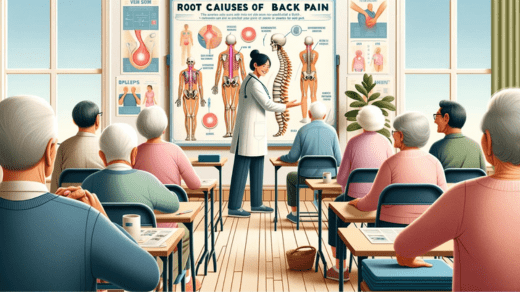The upper back, also known as the thoracic spine, plays a major role in anchoring the rib cage and protecting important internal organs within the chest. People experience pain in the upper back for various reasons, such as poor posture or an injury. Upper back pain treatment depends on the causes identified after proper diagnostics.
Let us understand more about upper back pain, possible causes, care, and non-surgical treatment options to alleviate pain.
About Upper Back Pain
Upper back pain occurs from the base of the neck to the bottom of the rib cage. It is not as common as neck or lower back pain but can be troublesome and stressful at times. Depending on its severity, the person may experience mild to moderate pain. They may experience aching pain, headaches, tenderness to touch, muscle stiffness and tightness, tingling sensations or numbness in the legs or buttocks, and in severe cases, fever, weight loss, and bladder or bowel-related issues.
Causes
The person may experience upper back pain due to different medical conditions and injuries, but common conditions include:
- Back strains and sprains are caused by lifting heavy objects or not lifting them properly, resulting in injuries to muscles, tendons, or ligaments.
- Upper back pain can result from bad posture, such as slouching or bending over with your torso tilted to one side.
- A bulge, slipped disc, or other disc-related problem may cause pain in the upper back.
- bone fracture in the spine due to an accident or a fall can cause pain.
- Osteoarthritis can cause upper back pain.
How do I diagnose upper back pain?
If the pain persists for more than weeks and is getting severe, book an appointment with your healthcare provider immediately. The doctor may ask about your medical history, recent activities, and other symptoms and perform certain physical tests, such as:
- Spine X-ray
- MRI scan
- CT scan
- Electromyography (EMG)
- Blood Test
Non-Surgical Upper Back Pain Treatment Methods
Fortunately, non-surgical treatment methods can help alleviate pain and provide comfort. Here is a list of non-surgical upper back pain treatment methods:
1. Home Exercise Regimen And Physical Therapy
Staying active and exercising regularly is the first treatment you should try to alleviate back pain. Take the guidance of your physician and spine therapists for prescribed exercises tailored to your symptoms.
2. Diet Changes
Avoid highly inflammatory foods, especially those high in trans fats, processed foods, and refined sugar. Consult your doctor for the proper diet plan to maintain a healthy weight that reduces pressure on the spine and alleviates pain.
3. Mindfulness And Meditation
Maintain both physical and mental strength to lower your back pain. With chronic pain, the person gets irritated, frustrated, depressed, and suffers from other psychological issues. Perform meditation, yoga, tai chi, and other relaxation strategies to strengthen your nervous system.
4. Lifestyle Modifications
Listen to your body and change the habits that are increasing pain.
Wrapping Up
For more information on non-surgical upper back pain treatment, consult the spine specialists of renowned healthcare centers like ANSSI Wellness, and make a more informed decision. Always consult specialists before going for any non-surgical treatment.

